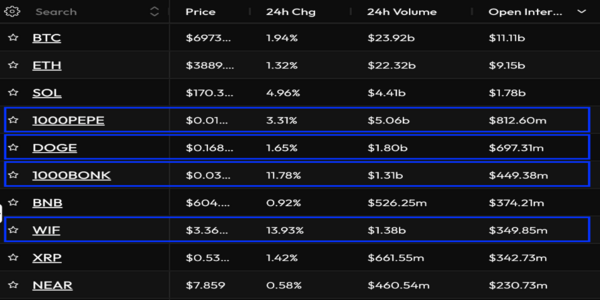Open interest refers to the total number of derivative contracts whose amount has not been settled yet. A derivative contract is an agreement whose value is derived from other assets, like digital assets.
The meme coin craze played an exceptional role during the bull run in the crypto market. Within a year of their launch, Pepe and WIF, secured their positions in the top 20 cryptocurrencies by market capitalization.
Among the traders, whether they are playing short or long, meme coins made their significant space by their spike in price.
Zaheer Ebitikar, co-founder of Split Capital, shared data that reveals the power of meme coins.
In this data, four out of 10 currencies are meme coins, with Pepe leading meme coins by $812.6 million in open interest.
Besides Pepe, WIF, DOGE, and BONK also managed to create their own space in the top 10. Bitcoin is leading all the currencies with $11.1 billion in OI, however, Ethereum followed with $9.15 billion.

Source: CoinGlass
A significant difference is witnessed from top to bottom in the chart, where Bitcoin‘s OI rate is $11 billion, whereas the Near protocol‘s OI is just $230 million. This showed a huge difference in interest among traders.
The rise in Open interest is the result of the recent Bull run in the crypto world, where Pepe hit a few week’s all-time high and WIF hit the mark of $3.67.
A contract is considered “open” from the time the buyer or seller initiates it until the counterparty closes it. Open interest (OI) increases when new contracts are created and decreases when contracts are settled. Unlike trading volume, OI provides continuous data.
A market is bullish when the Open interest grows, at this point, leverage traders open more contrast to anticipate price momentum. Even though meme coin prices and open interest (OI) increased, funding rates for meme coins stayed negative across crypto exchanges.
The funding rate is a scale to measure the cost of holding a position in perpetual swaps or futures contracts related to the asset’s spot price. Positive funding is bullish market momentum, while negative funding rate represent decreasing sentiments.

